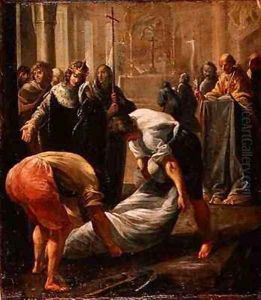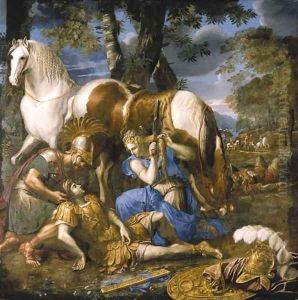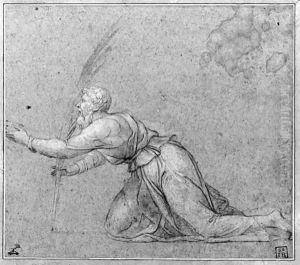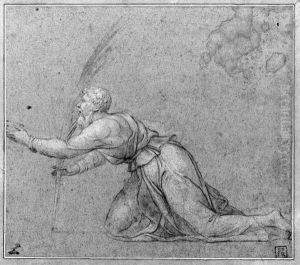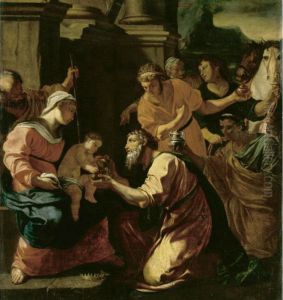Charles (the Elder) Erard or Errard Paintings
Charles Errard the Elder was a notable French painter, draughtsman, and engraver, born in 1606. He is often recognized as one of the founders of the French Academy in Rome. Errard's artistic journey began under the guidance of prominent masters such as Simon Vouet, and he later became influenced by the works of artists like Raphael and Annibale Carracci during his time in Italy.
Errard's career was marked by his versatility across different artistic disciplines. He was adept at history painting, which was considered the highest form of painting during his time. His works often depicted religious and mythological subjects, and he was known for his ability to blend classical ideals with the Baroque style that was prevalent during the 17th century. Errard's talents also extended to decorative schemes for grand architectural projects, which allowed him to collaborate with other notable architects and patrons of his time.
In 1648, Errard was one of the founding members of the French Royal Academy of Painting and Sculpture, an institution that played a critical role in the development of the arts in France. His reputation and influence grew, and in 1666, he was appointed as the first director of the French Academy in Rome by King Louis XIV. This position was not only a prestigious one but also gave Errard significant control over the artistic output and training of French artists in Italy. During his tenure, he mentored numerous young artists who would go on to become prominent figures in the French art scene.
Errard's importance in the art world was also evident through his contributions to the dissemination of classical art. He was involved in the production of engravings that reproduced famous works of the Italian Renaissance, which helped to spread the Italian style throughout France. Thus, Errard played a crucial role in shaping French art, aligning it with classical aesthetics, and integrating Italian Renaissance influences into French culture.
Charles Errard the Elder passed away in 1689, leaving behind a legacy as a pivotal figure in the French art world of the 17th century. His work and his leadership at the French Academy in Rome had a lasting impact on the development of classicism in French art and helped in establishing a strong connection between French and Italian artistic traditions.
